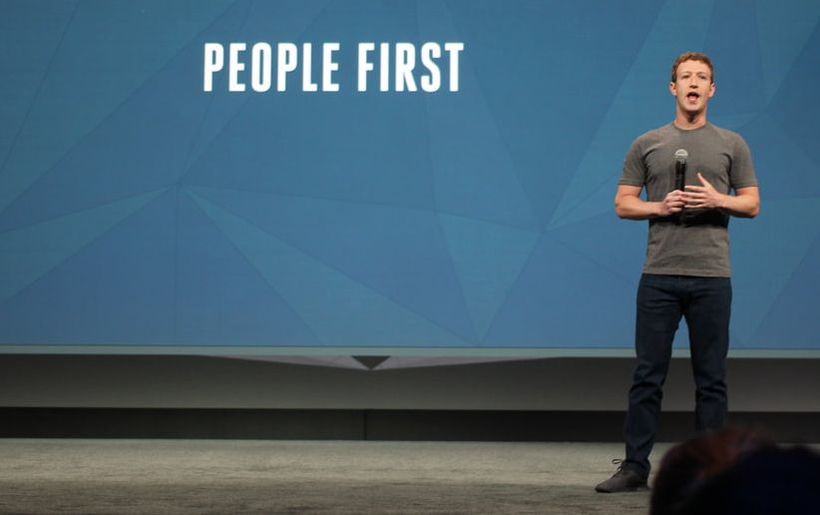|
Who’s to blame for the mayhem that social media creates in the virtual and real worlds?
The world’s richest man and X owner Elon Musk? Harvard drop-out, Facebook CEO Mark Zuckerberg? Or is it the Chinese behemoths WeChat, WeBo and TikTok? None of them. It’s us - ordinary folk like you and me who became infatuated with our smartphones. We got sucked into the vanity game of pursuing connections, likes and influence. We paid the price, giving away our personal deets and opening our lives for leveraging by the tech titans. We sold control, just as businesses, community groups and public authorities sold control by becoming dependent on those channels too.
0 Comments
2024 Edelman survey finds growing trust in government in Australia - and 3 ways to supercharge that25/3/2024 Australians trust government, according to the much-anticipated 2024 Edelman Trust Barometer results. Almost.
The barometer put Australia’s trust ranking at 50% - an improvement of 5 percentage points on the previous year. This makes us 11th, or better than mid-table, on the ladder of 28 global countries surveyed. It means Australians, on the whole, have moved from distrusting government to now being in neutral territory. When someone signs up to your email newsletter regard it as one of the biggest compliments you will receive in business. But watch out, winning people’s trust and business via email is getting harder. Greater regulation, concerns about privacy and our frenetic Attention Economy means you will need to deploy all your communications nous to cut through the media noise. Risks run high for schools and those in education sector that do not have a communications strategy25/3/2018 Education professionals are our unsaluted warriors. Politicians, C-suite executives and celebrities moan how hard their jobs have become because of these busier and more complex times lived under the spotlight of social media. I wonder how they would fare on the front line of education. Consider our headmasters, teachers and staff who are increasingly under siege as they try to shepherd Generation Now through a battery of internal and external attacks. Not too long ago, communications and marketing teams at schools could focus on building a school’s brand and delivering basic messaging. Now, every day presents a challenge. Have you noticed the world spinning a tad slower since the Facebook algorithm changes? My feed has more personally relevant posts now and less noise from those outside my inner circle. That was the intention when Facebook CEO Mark Zuckerberg announced that users’ posts and engagement would gain greater prominence at the expense of “public posts from businesses, brands and media”. Facebook wants to favour content that prompts conversation and users’ active participation rather than stuff that just gets liked for the heck of it, including previously popular video. Sounds like less cats and more discussion touchpoints. Already, time on Facebook has dropped marginally - and Zuck seems fine about that. At times, my news feed resembled more an eclectic mish-mash of news and product information than a space for personal interactions with buddies. But these changes have challenged the approach of many content marketers who had crafted strategies for clients around social media, especially Facebook, as well as media players who embraced distributing news via the platform. To be fair, though, users will be asked to indicate media they trust, which may improve the ranking of those outlets. If you are in media and feeling light-headed, take a deep breath - you have been working in the most disrupted of industries. You deserve a beer or something harder. Now sit down. Because I have encouraging news for you - as well as same trends to consider from my recent sabbatical in New York. What you do not want to hear is that the pace of change will continue as it has been. It won’t. It will multiply - that’s according to everyone at the forefront of change. The good news for media is that clear paths have emerged. The fog of uncertainty has lifted around paywalls, on how best to fund journalism and on where Facebook and Google fit into the media equation - well, sort of. Media folk also have a lot to thank Donald J Trump for - because he has re-stoked the fires of quality journalism. In short, for the first time in years, the media has reason to feel optimistic. I spent two weeks in New York visiting established and new media players, as well as attending the International News Media Association (INMA) world congress. During an INMA-run study tour I visited iconic media, including The New York Times (NYT), Dow Jones, Bloomberg and Google. I visited start-ups Playbuzz and established digital companies such as Chartbeat and Nativo. Some of the deepest insights came from talking with media executives. I spent time with delegates from the US, Germany, China, India, Latin America, South Africa, Finland, Norway, Sweden. Gee, even Australians and Kiwis. What were the themes? I shared a bunch in a blog aimed at communications teams and those wanting to craft their own DIY Newsroom™. Here I zone on what is of relevance to the news industry and those keen for solutions. So let’s roll. 9 essentials from Media Central, New York City, for communication teams to knock it out of the park1/6/2017 The stodgy stuff of reinventing business models and how best to use data is consuming the world’s top media executives in 2017. The new shiny toys of immersive reality and 360-video are receiving plenty of attention and funding, but for the most part big media is focused on getting its house in order. That is about returning to purpose and applying a traditional sales funnel approach to convert window shoppers into fully-fledged subscribers and then maximising revenue per user. Joining the dots between data and customer conversion is critical. Funnels? Data? Boring, huh? But for media today these are the smarts, along with amazing tech, helping companies emerge from a fog of uncertainty. I got up close and personal with the latest global thinking by spending two weeks in New York, the self-appointed epicentre of media today. I took a study tour of iconic media organisations, including The New York Times, Wall Street Journal, Bloomberg and Google, along with lesser-known but impactful start-ups PlayBuzz, Navito and Lotame. The tour was a prelude to the International News Media Association world congress held at the New York Times Centre, attended by media executives from 40 countries, and book-ended by a workshop that built a playbook for print. The message from New York: start spreading the news, media is fighting back. And I will address that in more detail in another blog. For those of us in the business of communications, I identified nine themes to absorb and which will help you better understand the landscape as is stands. *** Learn these 7 things from the best newsrooms and you will light up the world with your content5/12/2016 Communication units have learned a lot in recent years about leveraging social media, but if they really want to supercharge their messaging they should adopt the best behaviours of modern newsrooms. Newsrooms have the attributes, processes and energy that power content for ultimate audience engagement. Over 30 years, I’ve run or worked in dozens of newsrooms in Australia and New Zealand - the biggest and smallest. I’ve also seen how exceptional operations like The Sun and The Guardian in London, and the Chicago Tribune and Boston Globe have operated. Each of those newsrooms have a personality and idiosyncrasies that exude their target market. Like any organisation, no one newsroom does everything superbly. But here’s 10 traits of newsrooms, compiled from the best of the best, that comms teams could use as a checklist when considering how to better position themselves. |
AuthorStuart Howie is a Canberra-based media and communications strategist. He has worked with private and public organisations in Australia and New Zealand, helping them to discover, shape and tell their stories. He is the author of The DIY Newsroom, which won the social media/technology category at the Australian Business Book Awards. Categories
All
|










